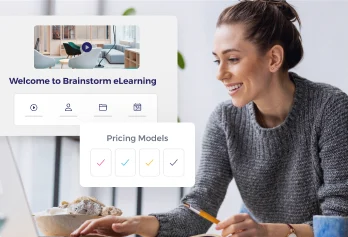Learning and development continues to evolve at a rapid pace. The adoption of cloud computing has dramatically reduced the resources that companies must invest in to support, develop and implement learning programs. These new technologies have enabled greater innovation and swifter adoption of new concepts and more complex features within the industry.
This has been most evident in our industry's quick response to the demise of Flash at the beginning of the decade; where LMS innovation had previously been associated with a glacial pace, cloud computing and the new reality of mobile interfaces written in HTML5, saw a change in attitude to how more responsive road maps and faster development cycles were being perceived by LMS vendors. The accelerating rate of development of the LMS has been matched equally by the increased sophistication of client requirements and expectations. Extended Enterprise is an example of a concept that has developed from these new possibilities of what an LMS can be.
From expense to revenue stream

Extended Enterprise learning is often defined as training, development, certification or support provided to your external non-employees. The learning management system was originally developed to reduce training costs and deliver more options for learning beyond the classroom. The audience was usually internal employees and assisted with delivering training compliance and ensuring competence. This meant that an LMS was something you spent money on rather than made money with. An Extended Enterprise LMS enables you to expand this audience beyond your employees and engage directly with your clients, channel distribution partners, resellers or even end-users of your products and services.
By taking advantage of the eCommerce capabilities of your LMS, you should be able to separate your internal and external audiences through one of the methods your LMS makes available for differentiating user groups. In our case, our clients often utilize features like Departments or Customizable User Profile Fields. This allows you to target and report on the learning content that you choose to make available to your different channels. Don't forget to look for flexible pricing that works with the usage patterns of extended enterprise learners as they are often more variable than the usage patterns of internal employees.
The right extended enterprise LMS plan will provide pricing that works for the customer training use case, as the number of users and their frequency of use can be difficult to predict. Promoting and delivering training to internal and external audiences is no easy job. Absorb LMS can allow you to utilize Extended Enterprise straight out of the box. Needs often evolve when LMS administrators require deeper reporting capabilities to track more learners and how they engage with material. To address these needs, tap Absorb Analyze plus Absorb Engage. Both tools bolster Absorb LMS and provide additional ways to track and connect with learners in a profound way. Follow along to our next blog that will outline the benefits of opening your LMS to your Extended Enterprise.
Want to learn more about the Extended Enterprise LMS model? Tell us a little bit about your situation and we'd love to discuss your requirements further.





